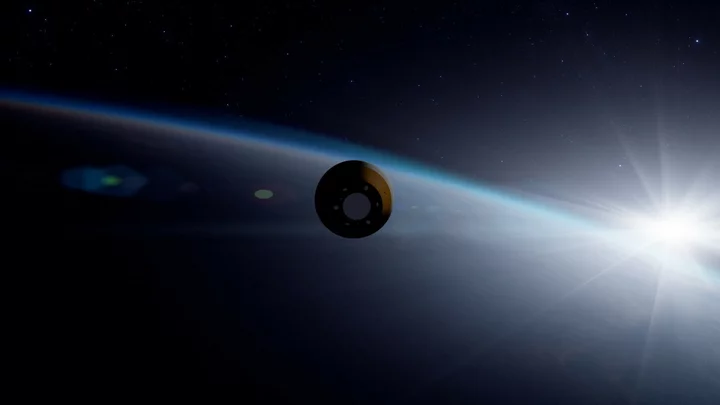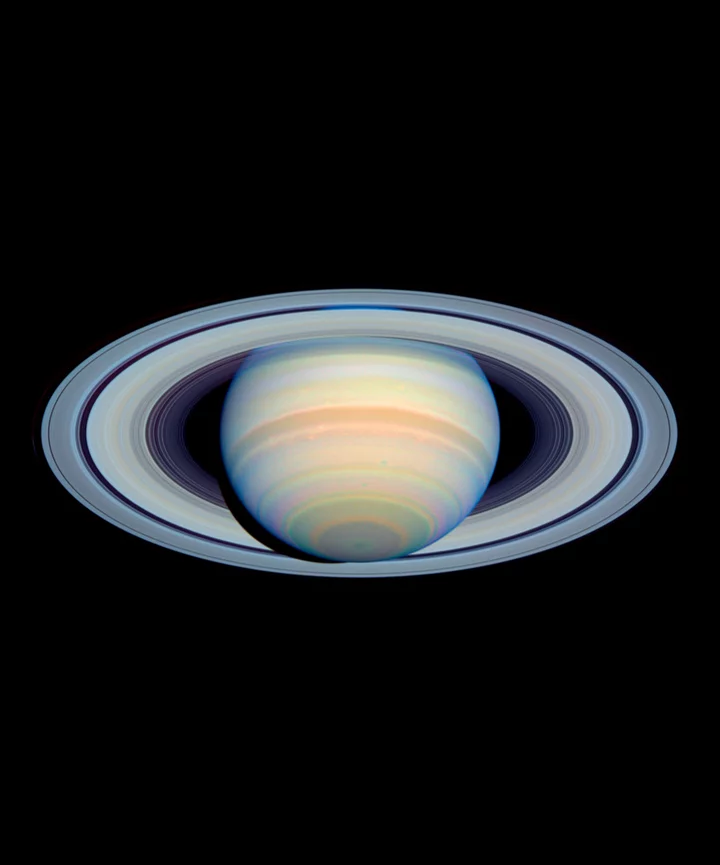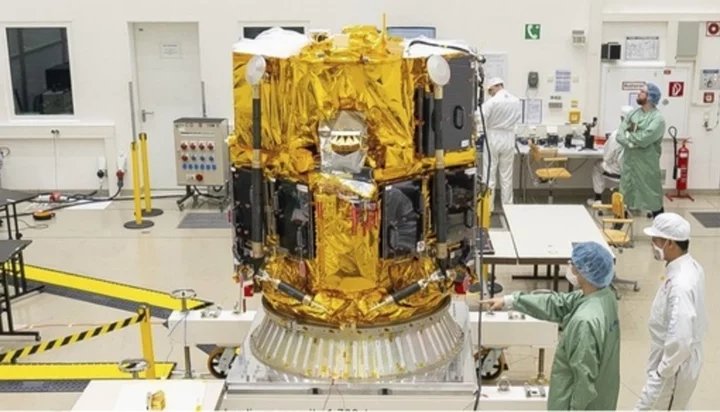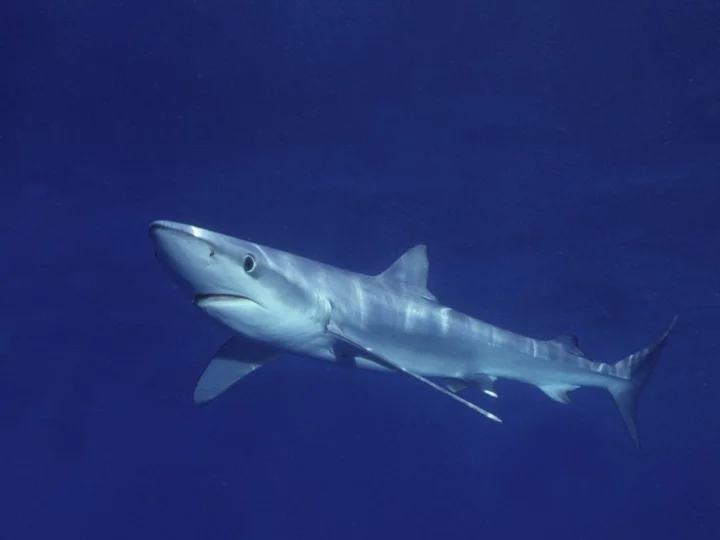NASA scientists awaiting the OSIRIS-Rex spacecraft's return will greet it with considerably more gray hair and wrinkles than when they saw it leave the launchpad.
The crewless spacecraft has traveled 4.4 billion miles through space over the past seven years on a quest to visit a near-Earth asteroid. The robot reached its destination, Bennu, and collected gravel — perhaps about a cup's worth — in October 2020.
Now that the spacecraft is closing in on Earth, the team will attempt to bring that sample all the way home by dropping the capsule 63,000 miles above the planet — about one-third the distance from Earth to the moon. The ground target is just 250 square miles, in a high mountain desert of Utah.
"It's the equivalent of throwing a dart across the length of a basketball court and hitting the bulls-eye," said Rich Burns, NASA's project manager.
If it works, OSIRIS-Rex will be the first U.S. mission to return an asteroid sample.
SEE ALSO: Boom! NASA just slammed into an asteroid and filmed the crashWhat is the OSIRIS-Rex mission's purpose?
NASA's $800 million OSIRIS-Rex mission stands for Origins, Spectral Interpretation, Resource Identification, and Security Regolith Explorer. The robotic spacecraft launched in 2016 from Cape Canaveral, Florida, and is the first U.S. mission attempting to retrieve a sample of an asteroid and return it to Earth for lab studies. The asteroid is known as Bennu.
Not since the Apollo moon rocks, collected between 1969 and 1972, has NASA brought back space souvenirs of this magnitude. Japan's space agency, JAXA, on the other hand, has retrieved smaller asteroid samples twice already, from Itokawa and Ryugu.
Mission control, where commands are sent to the spacecraft — including the sequence of maneuvers necessary to deliver the sample to Earth — is based at Lockheed Martin in Littleton, Colorado.
Bennu, a near-Earth asteroid, has a very slight chance of hitting Earth in the next century. Credit: NASA Goddard Space Flight Center / University of Arizona "It's the equivalent of throwing a dart across the length of a basketball court and hitting the bulls-eye."What is Bennu?
Bennu, named for an ancient Egyptian bird deity, is an asteroid discovered in 1999. It is a little more than 1,600 feet wide, or about the size of the Empire State Building. The carbon-rich space rock is the shape of a droplet and made of gravel and boulders barely held together by their own microgravity.
"I like to think of Bennu as a small mountain floating in outer space," said Dante Lauretta, the team's principal scientist, who is based at the University of Arizona.
Bennu earned the nickname "the trickster asteroid" because it has baffled the team throughout the mission. Scientists believed that when the spacecraft touched down to collect the sample three years ago, it would encounter a solid surface. Instead, the asteroid responded to the spacecraft more like a fluid, or a child's ball pit.
Bennu was selected for the mission because it is chock-full of carbon, meaning it could contain the chemical origins of life. It also has a very slight chance of hitting Earth in the next century. Learning about the asteroid could be helpful in future efforts to deflect it, should that become necessary. Bennu was also considered a convenient asteroid destination because every few years it crosses Earth's orbit around the sun, making it easier to reach than some other asteroids.
Why did NASA collect an asteroid sample?
NASA scientists are interested in studying asteroids, the leftover rubble from our solar system's formation some 4.6 billion years ago. These ancient space rocks — or "grandfather rocks," as one of the teammates put it — could provide clues about how the entire solar system evolved.
By probing a sample of Bennu, the team is poised to chip away at big questions, like how do organic materials originate, and why did life emerge on Earth? Scientists still don't fully grasp how to get from simple carbon molecules, like the natural gas methane, to complex ones, such as amino acids that make proteins and nucleic acid that makes up genetic material, Lauretta said.
Hundreds of scientists and 60 laboratories around the world will be involved in analyzing bits of the sample upon its return. Though they aren't sure what they'll find within the canister, they aren't expecting microscopic aliens.
"In terms of could it have biotic material, that's a vanishingly small probability," Lauretta said.
Bennu is the shape of a droplet and made of gravel and boulders barely held together by their own microgravity. Credit: NASA Goddard Space Flight Center / University of Arizona Parachutes will slow the capsule from 27,650 to 11 miles per hour before it hits the ground. Credit: NASA / Keegan BarberWhen will the OSIRIS-Rex sample return?
The cup of Bennu gravel will return in a capsule shortly after reentry, at 10:42 a.m. ET Sept. 24. But four hours before the package pierces Earth's atmosphere, flight controllers will make a decision about whether to proceed with the separation of the capsule from its spacecraft, based on human safety, capsule survivability, and landing accuracy criteria.
After the spacecraft releases the capsule about 63,000 miles from Earth, it will travel through space for about 20 minutes before firing its thrusters to avoid Earth. At that point, it will begin its extended mission to another asteroid. If all goes well, the spacecraft will reach Apophis in 2029.
If for some reason flight controllers poll "no-go" for the landing, the capsule will remain with the spacecraft as it flies past Earth. In two years, the team could have another opportunity to drop off the package.
The recovery team has practiced the return of the OSIRIS-Rex mission with a capsule replica. Credit: NASA / Keegan BarberWhere will the OSIRIS-Rex capsule land?
The OSIRIS-Rex capsule will land in the military's Utah Test and Training Range, southwest of Salt Lake City. It will then be taken by helicopter to a clean room at the range's Dugway Proving Ground, the Army's largest and most isolated facility in the continental United States. The installation is meant for testing chemical and biological weapons, as well as other war-fighting gear.
It's an ideal location for something to fall from heaven: There are hardly any souls around to be hurt by a falling projectile, save for the cattle and wildlife roaming about the 2.3 million-acre base.
Want more science and tech news delivered straight to your inbox? Sign up for Mashable's Light Speed newsletter today.
With no one around for hundreds of miles, a military base in the Utah desert is a safe place to try to drop the sample. Credit: NASA / Keegan Barber"It's a beautiful place to land the sample capsule," Burns said. "Why? Because it's enormous. Its expanse is mind-boggling, really. "
"Its expanse is mind-boggling, really. "Parachutes will slow the capsule from 27,650 to 11 miles per hour before it hits the ground. At its highest speed, the capsule, protected with a heat shield, will be surrounded by a ball of fire. The Air Force will use radar and cameras to determine its precise location for the recovery team.
After the capsule is airlifted by helicopter to the clean room on base, the team will give it a so-called "nitrogen purge," a method of replacing unwanted gas and moisture in a system with nitrogen. The next day, the capsule will fly on a C-17 aircraft to NASA's Johnson Space Center in Houston for the initial lab analysis. The team will portion pieces of the sample and send it to researchers around the world.
The OSIRIS-Rex spacecraft will release the capsule 63,000 miles away from Earth in space. Credit: Lockheed MartinHow to watch the OSIRIS-Rex sample return
If you don't have special clearance to get on the military range, you won't have a chance to see this event in person, though some reporters will be allowed on the base to observe operations from afar. The site itself is too vast to know where to wait and watch for the parachuting package. And there's no vantage point to see this spectacle happening from outside the range.
But viewers will be able to watch some of the activity from home. NASA plans to broadcast live coverage of OSIRIS-Rex's return on its website and Youtube starting at 10 a.m. ET (or 7 a.m. MST, the local time in Utah) Sept. 24. The capsule is expected to enter Earth's atmosphere at 10:42 a.m. ET and land about 13 minutes later.
"One thing that we tend to do is anthropomorphize the spacecraft. 'Remember when we (collected)? Remember when we orbited?'" Burns said. "A little bit of us is on that spacecraft, and a little bit of us is coming home."









